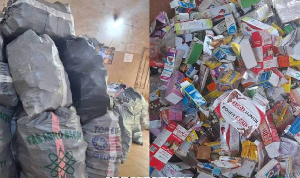Cameroonians are expecting concrete spin-offs from development reforms to impact their day-to-day lives.
The year 2015 has ushered in its own challenges. But government as usual is not folding its arms. The years past have been full of commitments and activities to change the livelihoods of Cameroonians who expect that the economy in 2015 will fare better.
The Head of State, Paul Biya, in his state-of-the-nation address on December 31, 2014, made it clear that the 2014 road map was largely achieved, but projections for 2015 remain daunting.
Road Infrastructure
If there is one thing Cameroonians from North to South, East to West see as a panacea to their wounds, it is the need for more accessible roads and the National Road Board could be a solution. It’s last sitting on December 23, 2014 in Yaounde under the chair of Prime Minister, Philemon Yang revealed that 2014 was full of activity for the sector.
Some 114 km of roads, including the Ndop-Kumbo, Nandéké-Mbéré, Kribi-Lolabé, Zoétélé-Nkolyop road sections have since January been constructed. There have been start-up of construction works on certain engineering structures including the second bridge on Wouri River and the bridge on Mayo-Galké; the rehabilitation of some road sections on a linear distance of 249 km, such as the Mora-Dabanga road whose works are on-going, the Yaoundé-Bafoussam-Bamenda corridor, and the Figuil-Magada road.
Similarly, certain agro-pastoral production basins were opened up and access roads built to certain tourist sites and border zones. Operations to protect the national road heritage were stepped up with the procurement of mobile solar-powered axle-load weighing equipment and the optic fibre connection of weighing stations.
In terms of opening-up of production basins, the previous operation was already marked by the opening of 44 km of agricultural feeder and access roads, the rehabilitation of 106 km of roads and the construction of 13 crossing structures for a total cost of FCFA 903 million.
This work was continued in 2014, with the opening and rehabilitation of 215 km and construction of 24 crossing structures for a total cost of FCFA 1.490 billion. The total linear distance of feeder roads maintained rose from 7,900 km in 2013, to 8,500 km in 2014.
Health Coverage
A healthy soul is capable of fending for itself and this is only possible when a soul that is sick is able to receive health assistance. And what happens when the sick is unable to have access to a health unit because of distance? This possibility is gradually being ruled out through some government reforms.
In his address to the nation on December 31, 2014, President Biya recalled that substantial improvements have seen the light of day in the health domain. Promises have been a reality with “malaria treatment for children aged below five years now free.” The country’s health map now comprises three referral hospitals.
Water & Energy
Available statistics from the Ministry of Water and Energy Resources indicate that water supply in Cameroon, both in quantity and quality, still remains a thorny issue especially in main metropolis. In Yaounde for instance, the Akomnyada water treatment centre, alongside others, supply the city with 150,000 cubic metres of potable water per day.
Even though added to the Mefou catchment which at full capacity will pump in additional 50,000 cubic metres per day, supply still falls below demand. The situation in Douala is not different where urban boreholes, Japoma and Yato water treatment centres and others are supplying the economic capital with 150,000 cubic metres of water daily. Deficit is about 100,000 cubic metres daily.
The emergency plan is therefore out to bridge the demand/supply gap. Some 30 secondary towns will be provided with potable water facilities while over 100 boreholes will be constructed in each of the country’s ten regions. The plan for Yaounde will hinge on tapping 300,000 cubic metres of potable water from River Sanaga. There are also plans to develop boreholes in areas where water still remains a luxury.
Improvements in educational facilities, security needs and low-cost housing, amongst others are some of the concerns that Cameroonians will expect to see visible government actions in 2015.
Actualités of Wednesday, 7 January 2015
Source: Cameroon Tribune













